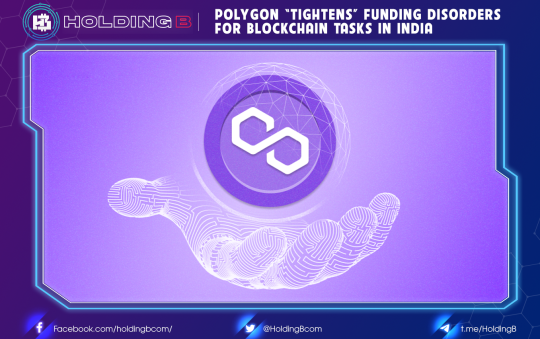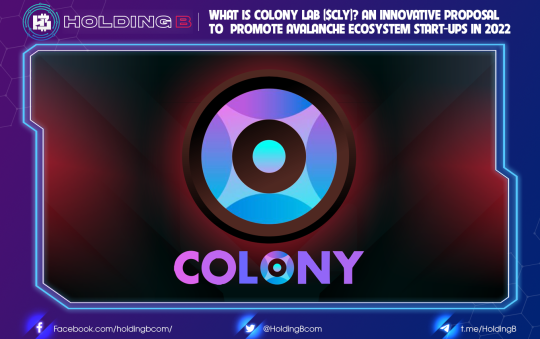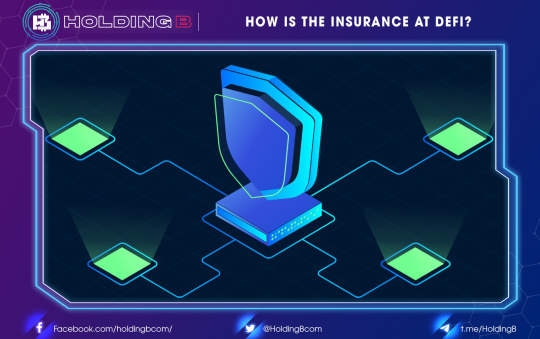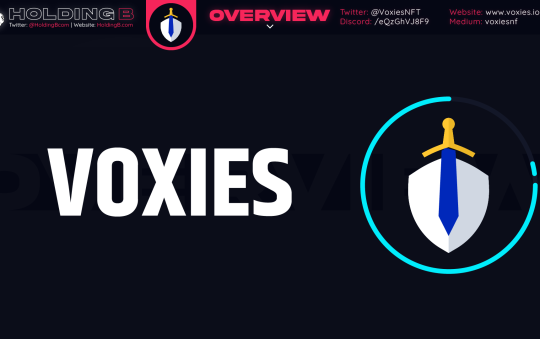Hello, Have you heard of the new generation of the Internet? Did you know anything about Web3.0? If not, HoldingB would like to send you the following article about Web3.0!
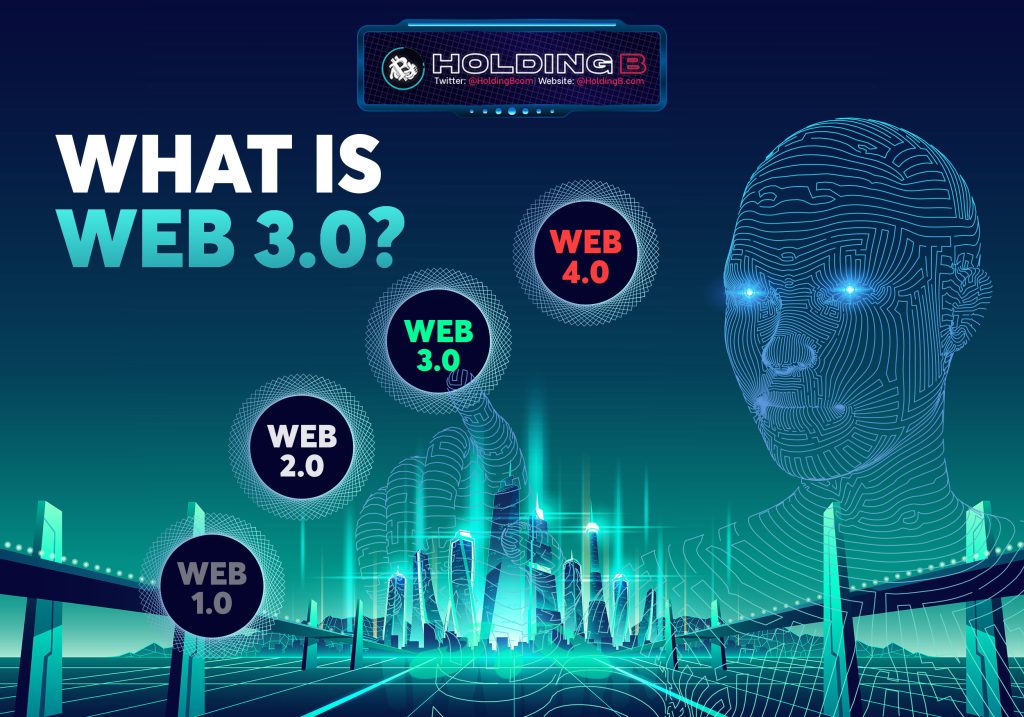
WEB 3.0 DEFINITION
Web 3.0 is a possible future version of the internet based on public blockchains, a record-keeping system best known for facilitating cryptocurrency transactions. The attractiveness of Web 3.0 is that it is decentralized, meaning that rather than consumers accessing the internet through services mediated by companies like Google, Apple or Facebook, individuals, themselves, own and govern sections of the internet.
Web 3.0 doesn’t require “permission,” which means that central authorities don’t get to decide who gets to access what services, nor does it require “trust,” meaning that an intermediary isn’t necessary for virtual transactions to occur between two or more parties. Because these agencies and intermediaries are doing most of the data collection, Web 3.0 technically protects user privacy better.
Decentralized finance, often known as DeFi, is a component of Web 3.0 that’s gaining steam. It entails executing real-world financial transactions on the blockchain without the help of banks or the government. Meanwhile, many major corporations and venture capital firms are pouring money into Web 3.0, and it isn’t easy to conceive that their engagement won’t result in some form of centralized power.
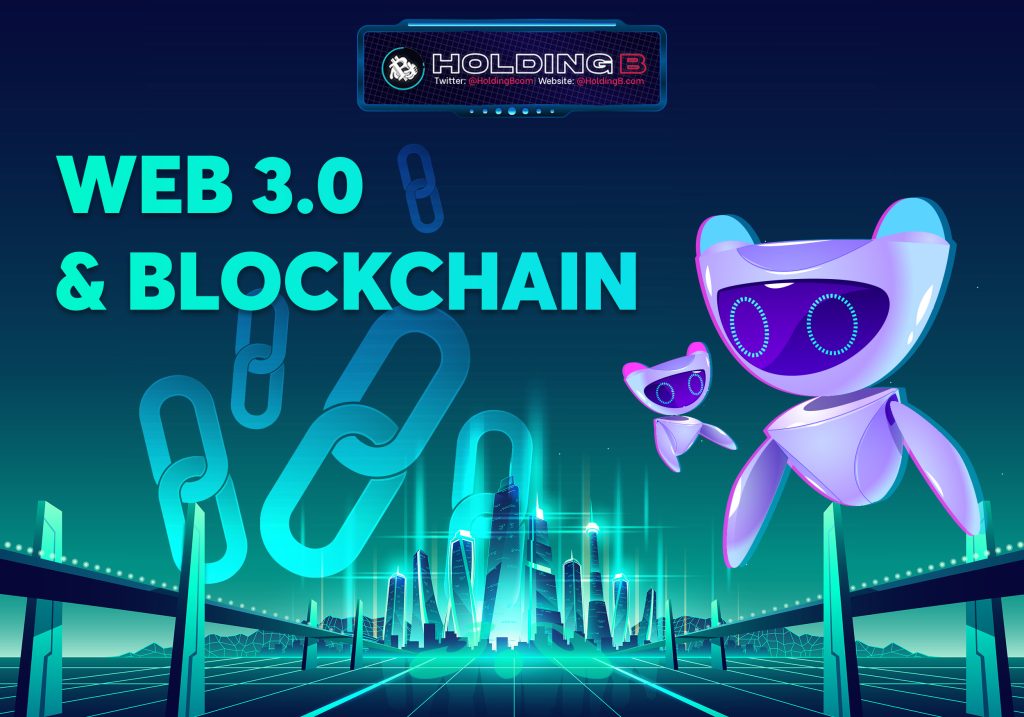
WEB AND BLOCKCHAIN
Experts believe that blockchain technology is necessary for creating the next generation of the internet. Blockchain was first conceptualized in 1991, but it became a reality with the launch of Bitcoin in 2009. This technology has some crucial features necessary for the development of Web3. For example, blockchain can maintain maximum transparency in transactions through distributed ledger technology (DLT). Moreover, blockchain is virtually hackproof, subsequently making Web3 safer than the current generation of the internet.
What makes Web 3.0 even more interesting is that it includes payment methods that do not require fiat currency. Web3 can be independent of any government or bank through the use of cryptocurrencies and tokens. This paves the way for the next generation of the internet to be truly decentralized. With such features, Web3 could create a self-sustainable ecosystem free from the influence of any government, corporation, or any other institution. So, Web 3.0 could really make the internet fully community-driven.
Furthermore, cryptocurrencies are seen as programmable money. This comes after the groundbreaking innovation from Ethereum and the debut of smart contract . Nevertheless, the term programmable money is not limited only to cryptocurrencies that support smart contracts. For example, Bitcoin is also part of the “programmable money” group but does not support smart contracts. In essence, smart contracts just hugely increase the scope of programmability for cryptocurrencies.
WEB 3.0 CRYPTO PROJECT
Web3 Foundation, the pioneer of Web 3.0
Until now, you probably already understand what Web 3.0 is, but in fact poses which is a huge challenge, who will build Web 3.0? Creating the infrastructure of the next-generation Internet takes a lot of resources and people, but who will pay them to do this? Fortunately, we already have the Web3 Foundation, which is an organization that nurtures and manages technologies and applications in the areas of decentralized web software protocols, especially those that use such methods. Modern cryptography to protect decentralization.
Previously, Web 3.0 mainly referred to applications that allow users to interact with the Ethereum blockchain. The Ethereum platform allows developers to build decentralized applications. However, Web 3.0 can also develop applications on the Polka DOT and Kusama blockchains.
Polkadot – Web3 Foundation’s flagship protocol
Polkadot (DOT) is a multi-chain (Multi-Chain), heterogeneous and scalable technology. It allows Blockchains to connect with each other to share data to form a decentralized Network.
Polkadot focuses on solving two main problems of Blockchain: interoperability and scalability of the network.
Polkadot is an open source project and anyone is free to contribute to the development of the platform. For Polkadot, the Web3 Foundation has a financial and technological role to play.
Kusama (KSM) is Polkadot’s dedicated network that detects and alerts any vulnerabilities or weaknesses on the Polkadot network. For developers, Kusama is the proof-of-concept platform for runtime upgrades and on-chain governance.
It can be said that Kusama is an experimental version of Polkadot that exists as a standalone network and it allows blockchain developers to deploy and test versions or applications on this network before launching them on Polkadot.
Kusama was founded in 2019 by Gavin Wood, founder of Polkadot and co-founder and former CTO of Ethereum.
The Web3 Foundation provides funding for research and development projects based on Polkadot and Kusama software up to $100,000 each. To be eligible for funding, the project needs open source code and licenses such as GNU GPLv3, Apache 2.0.
In addition to backing Web 3.0 projects, the Web3 Foundation conducts research projects itself by an internal team based in Zug (Switzerland) and collaborates with specialized projects and other academic research groups.
Research content mainly focuses on areas related to decentralized systems including:
- Privacy, Cryptography, Web3 Policy.
- Decentralized Algorithms: Consensus and Optimization.
- Crypto economy and game theory.
- Networking.
- Behavioral economics and usability.
- Research and analyze current protocols, come up with new and concretized protocols.
- Researching the Polkadot network protocol.
Read more : https://holdingb.com/web3-foundations-grant-program-and-featured-projects/
WEB 3.0’S PROBLEMS
Slow speed
The decentralized internet is more secure and error-proof, but it also has a slower speed due to the need to run validating nodes.
Note that the transaction speed of cryptocurrency is not the speed of information transfer of the Blockchain but it is correlated. A transaction in the Blockchain can carry a certain amount of data
Not new user friendly
Most of the current decentralized technologies are not friendly to new users, users must have a certain understanding of Blockchain technology to be able to use it.
The transition from the traditional web to the decentralized web will have to happen gradually from the traditional web => partially decentralized => fully decentralized so that Internet users can adapt.
Although it is likely that the future of the Internet will be decentralized, this does not mean that centralized systems will be completely abandoned as they are still needed.
Huge amount of junk data
Because data stays on the Blockchain forever, they make the Blockchain heavier and heavier. Moreover, Blockchain technology requires each node to download all Blockchain data, making the total capacity of Blockchain on the entire network even more terrible. Such as Ethereum’s Blockchain, which reached 300 Gigabytes in size on September 19.
Ability of extension
Due to security concerns, a decentralized system cannot arbitrarily scale like a centralized system. The early Blockchains of Bitcoin or Ethereum were notorious for having extremely poor scalability, causing the networks running on these Blockchains to often become congested. This is a vital problem that Web 3.0 needs to solve if it is to become a reality.
ADVANTAGES OF WEB 3.0
No middlemen
In a decentralized network, transactions and data are exchanged directly so your data and money do not have to be controlled by an intermediary like Facebook or Paypal.
Prevent data breaches
Because the data will be controlled by you. It is very difficult for a hacker to gain control of your data unless he can control the entire network. Companies such as Facebook and Google cannot sell your data to third parties for a profit.
Data will live forever
Your favorite games, text messages, or any other data on Web 3.0 will live as long as the Internet works, no one has the right to access them and delete them.
Services will be available 24/7
Because Web 3.0 services do not have a fixed server, they will continue to operate as long as the network exists. A power source or data failure or a damaged server won’t be able to pause your favorite game
Democracy
The Internet will become as democratic as it was. No one has the right to prevent you from accessing the Internet. You can access the Internet at any time and anywhere.
Smart connection
Web 3.0’s semantic tagging will enable the Internet to become smarter and more connected. Users can use common semantically tagged internet-connected devices to deliver a tailored, intuitive, and personalized website experience. To sum up, that is the benefit of the combination of IoT and AI technology
WHAT DOES WEB 3.0 AND BLOCKCHAIN TECHNOLOGY HAVE TO DO WITH EACH OTHER?
As mentioned above, Web 3.0 is a decentralized network, but a decentralized network must have a consensus mechanism to validate information and make members trust each other, Blockchain technology consensus mechanism to solve that problem. Without Blockchain technology, the dream of Web 3.0 would have to be put on hold until another reliable consensus mechanism is found. In contrast, Web 3.0 is also another application of Blockchain besides cryptocurrency and data storage.
See ya in the next article !
Don’t forget to follow useful articles about Crypto Market from team Holding B !!!
- Telegram Channel: https://t.me/HoldingBcom
- Telegram Group : https://t.me/HoldingB
- Website : https://holdingb.com/
- Twitter : https://twitter.com/HoldingBcom


